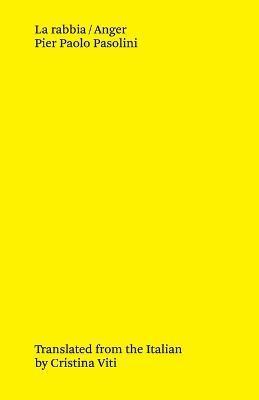Written in response to producer Gastone Ferranti's request for his comments on a set of newsreel items, the poet would respond with a montage of his own. Via the unfolding of a chrysalis of images, in La rabbia (1963), Pasolini's lens pans over Soviet repression in Hungary; the Cuban revolution; (the utopian object of) space exploration; political imprisonment in Algeria; the liberation of the former European colonies; the election of Pope John xxiii; the prospect of revolution in Africa and the Middle East; in Europe and in Latin America... Here, we've a panoply of photorealist intimations. The death of Marilyn Monroe crests as an idea in this tidal pooling of reflections, as the poet's line lights out for conceptual rhymes and counterpoints. In Viti's translation, the weave of prose and poetry that forms La rabbia portrays the vitality of Pasolini's work in its capacity to speak to both the specifics of his contexts, the character of our own present tense, and the ironic fact of a life lived against the gulf of discontent in its myriad forms. Here, we've a startling confrontation of a revolutionary struggle in stasis set in lines that crystallise in a rallying call against blindness. Alongside a first, unabridged English language translation of Pasolini's 'Sequences, ' the Tenement Press publication of La rabbia also includes an introduction by Roberto Chiesi (cultural director of the Centro Studi-Archivio Pier Paolo Pasolini, Cineteca di Bologna), and an afterword by storyteller, novelist, essayist, and screenwriter, John Berger.




